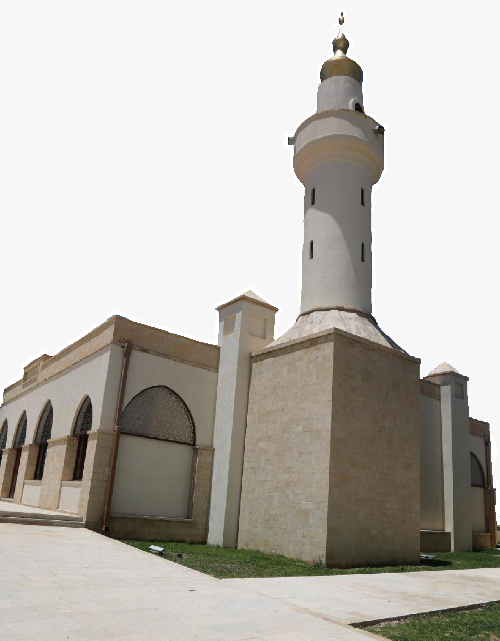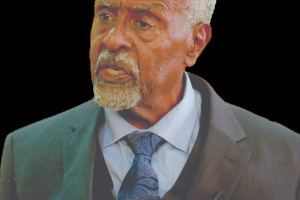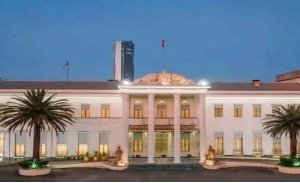
Al Negashi, the Holy place in Northern Ethiopia, Eastern Zone of the Tigray State also referred to as Negash in the local language is known as the Second Mecca by the followers of Islam, says Maerg Abay tourism specialist in Al-Negashi and the town of Wukro. The mosque is under the wing of Wukro Culture and Tourism Bureau.
The ancient historical place is undergoing renovation by the Turkey’s Cooperation and Development Agency (TİKA). The mosque and its surrounding has now seen the completion of its first phase.
TİKA always heeds to the needs of the country (Ethiopia), in other words, to the government, NGO’s and society. TIKA’s sole purpose in the restoration of the Al Negashi Tomb and the surrounding town lies in supporting the country from north to south, west to east, regardless of ethnicity and religion, TIKA’s Addia Ababa Programme Coordinator Mehmet Ali Yetis told The Ethiopian Herald.
The motivation in renovating the Negash Tomb and surrounding dilapidated buildings resides in attracting an influx of tourists especially from Eritrea. This is evidenced in our accomplished mission in the first phase. In other words, TIKA’s goal is beefing up Ethiopia’s tourism muscle and enabling the nation generates more money from the smokeless industry, as stated by the coordinator.
“TİKA places focal attention on the results of a development cooperation than the amount of capital outlaid. On the other hand, it is not considered as an investment. The renovation of Negash is a development cooperation effort.The project had taken more than 4 years.”
Yetis further stated that the Negash Project is a development cooperation project aimed at developing tourism. Turkey has different organizations for cultural diplomacy apart from TİKA. And it believes that Negash is important for every citizen in Ethiopia as it is a cultural and historical site. If one person gets a dividend because of the renovation or one person is happy about it then TIKA considers the venture as a successful one.
“What is important is, in this regard, attracting attention of experts, tourists
and people. This is a vital value addition to Ethiopia. People should know that. TİKA has almost 60 offices across the globe including Philippines, Mexico, Montenegro and South Africa. It works with the same zeal around the World: Wherever there is a person in need, more or less TİKA is out to do its best.”
Background
During the 7th Century, there were clashes between a mercantile Arab tribe, which historically inhabited and controlled Mecca (Quraysh), and Ka’aba clan, in which the Islamic prophet Muhammad was born into the Banu Hashim clan of the Quraysh tribe.
The Quraysh had outnumbered the followers of Prophet Mohammed. The former made a point attacking the latter. Thus, Prophet Mohammed wrote a letter to his followers advising them that they should seek a refuge in the land of Habesha (Today’s Ethiopia) that was marked for justice and fairness so that they could seek a safe haven, stated Maerg.
Five of Prophet Mohammed’s 16 followers were females. Rukia, the Niece of Prophet Mohammed, was among the five. The 16 followers came here crossing the Bahire Negash (Presently called Red Sea).
It was for the first time they set foot on the land of Habesha and resided in the place prepared for them by the then King of Axumite Kingdom. They resided in the present day of Eastern Tigray in a place called Negash (Al-Negash).
The first 16 migrants were called Sehabis. Vexed by the warm treatment the Sehabis enjoyed, the Quraysh followed them via the red sea to attack and eliminate them, while they were rescued in Ethiopia. The Quraysh lodged a complaint to the King of Aksum that the 16 people rescued in the land of Habesha are “traitors.”
Pledging a large amount of gold as a bribe they requested the King to handover the alleged traitors to them.
The King stood fair to both sides. So he heard the counter arguments of both.
The Sehabis clarified to him as followers of Prophet Mohammed “We believe in an invisible God. Unlike our persecutors we abhor idols. ”They told him that was why the Prophet sent them to Ethiopia to seek a refuge and evade death penalties.
At last, the King refused to hand over the Sehabis to the Quraysh and gave the Sehabis full protection. This took place in the 614 GC, according to the expert.
“If you believe in an invisible God your faith is not far from ours (Christianity)!” the king said to the Sehabis.
And after three years, the 16 Sehabis reported to their Prophet that: “We are leading a tranquile life in the land of Habesha,” Following this report, an additional 83 followers came to Ethiopia. This is referred as the first Hejira. Then the Islam faith begun to peacefully ripple towards different parts of Ethiopia, Maerg further went on to say.
Sheikh Adem, an old man who is proficient both in Arabic and Tigrinya, has been serving as a guide in the Al-Negashi tomb for some 40 years. Ensconced on Negash’s mountainous area, positioned some 3-4 Km to the north of Wukro, the Sheikh said that Prophet Mohammed was informed the presence of a fair ruler in the land of Habesha that rules without a preferential treatment of followers of the Christians and Muslim faiths. So, the Prophet preferred to send his followers to Ethiopia than to the immediate neighbors Yemen or other Arab countries.
The residents in Negash and surrounding areas live enjoying love and tolerance. They are heard saying “We (the Muslim faithful) attend the holidays of Christian neighbors and they pay us in kind. That is there is reciprocity. Even the Negash Mosque itself was built by a Christian Priest.”
The Ethiopian Herald July 21, 2019
BY HAFTU GEBREZGABIHER




